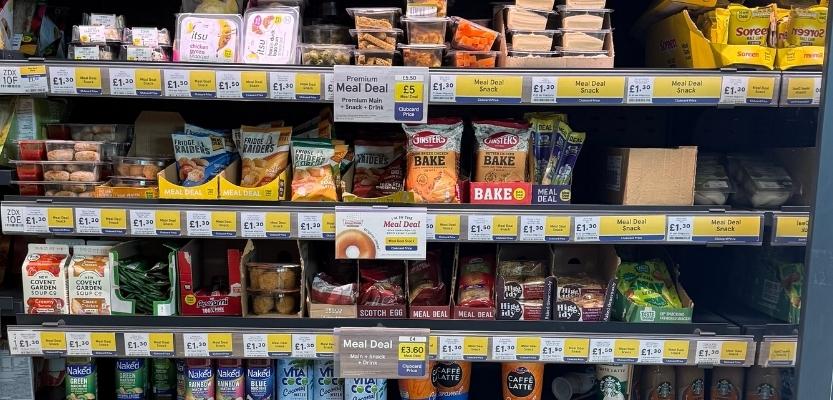Have you ever walked into stores and realised that a lot of the fixtures are starting to tell the same story? It’s not a bad thing. It’s not boring. Just . . . familiar.
And there’s a reason they’re like that.
It happens in every category – from chilled to snacks – because when a market is busy, brands naturally drift towards the same cues.
Value, health and convenience
The difference is in how they’re show.
And nowhere is that more visible at the moment, than in food to go.
A few weeks on the road
I’d been asked to review the food to go category ahead of a client’s retailer meetings. Fifteen stores later – from Aldi to Waitrose, via Greggs, Pret and M&S – a pattern was starting to emerge.
The retailers that stood out to me weren’t necessarily the cheapest or the biggest. They were the ones telling the clearest story on shelf.
What I noticed across 15 retailers

Here’s what I noticed:
- Meal deals are still winners, but they work best when they feel fresh. The best fixtures made it easy for shoppers to mix and match, not just pick up the same trip every time.
- Health is getting braver. M&S’s Good Gut and Brain Food bowls show that functional can still look indulgent.
- Retail and foodservice are edging closer. Pret’s open displays and Tesco’s YO! counter add energy and credibility to lunchtime shopping.
None of it felt negative, but it was a reminder that established categories keep evolving, one bay at a time.
Why this matters for every brand
Whether you’re selling sandwiches, salads or flapjacks, here are four ways to keep your category fresh:
- Keep walking your category. Spot shopper missions that have changed. What felt relevant six months ago might not hold attention today.
- Make your story visible. If a buyer or shopper has to work to “get” your product, you’ve already lost them.
- Blend consistency with curiosity. keep your anchor SKUs, but don’t be afraid to test something new or seasonal.
- Back your decisions with evidence. Photos, fixtures and data turn opinions into strategy.
From insights to results
The insights from this review led to a four-SKU listing in over 1,000 stores, opened new retail conversations, and gave the client a much clearer sense of where they fit.
When you can see your category properly, the opportunities show up. Regular category reviews turn evidence into opportunity.
If your next buyer meeting is on the horizon and you’d like to go with more clarity, let’s chat.







